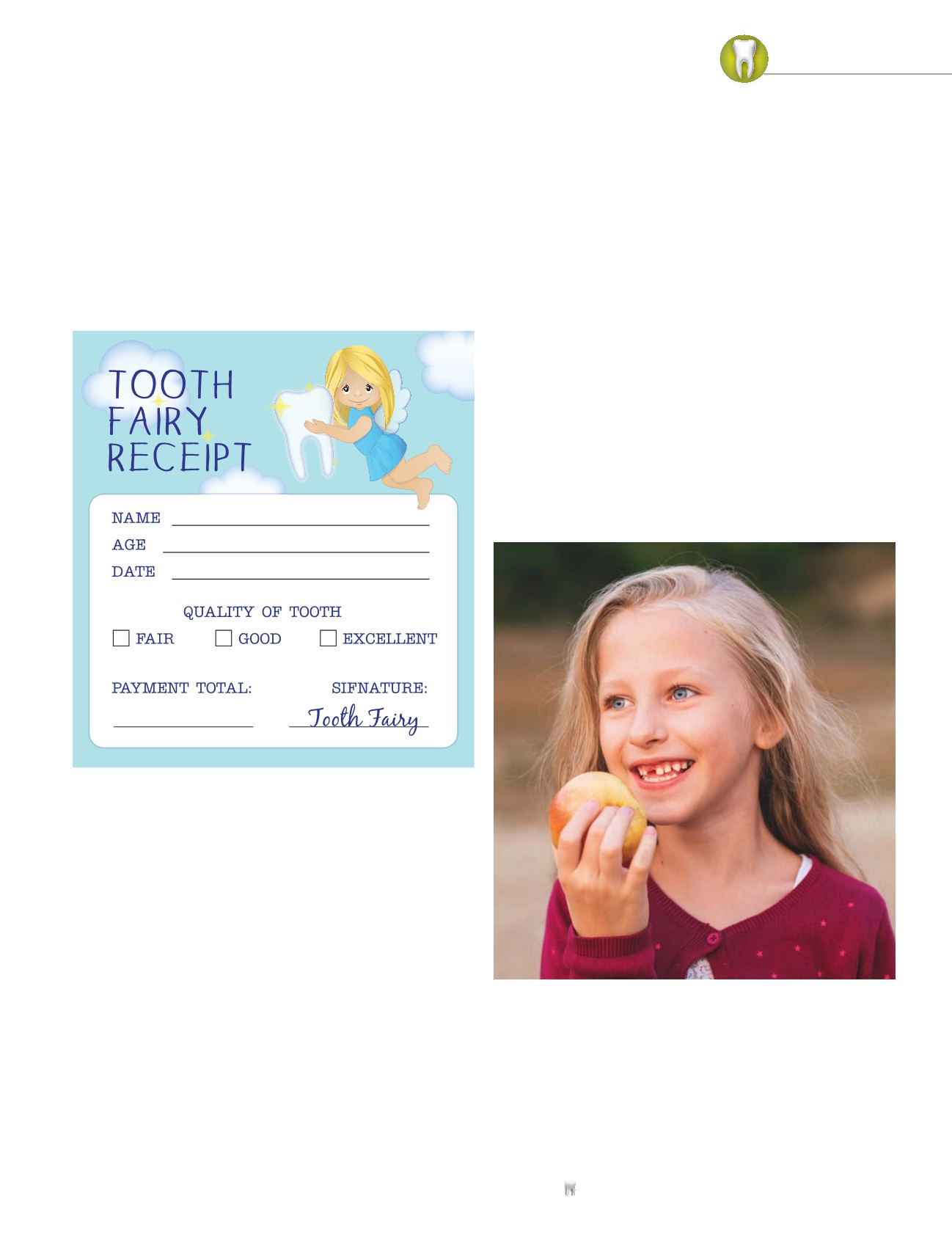
 XXX $IBSMFTUPO1IZTJDJBOT DPN
XXX $IBSMFTUPO1IZTJDJBOT DPN
]
XXX $IT%FOUJTUT DPN]
XXX 4VNNFSWJMMF1IZTJDJBOT DPNsmiling faces
plastic molar necklace. Students proudly show off the
necklace to their friends and can’t wait to place it under
their pillow that evening. In 2013, Visa Inc. conducted a
survey that found American children receive an average
$3.70 per tooth.
One mother creatively stocks $2 bills and gives them
as a gift from the tooth fairy. In the past, candy was the
preferred gift, but most parents have drifted away from
this practice in order to protect the precious adult teeth
that are about to follow.
One child even received a partially used gift card
under his pillow, indicating that receiving something –
anything – for a used tooth is more important than what
is actually given.
So while most families have accepted the tooth fairy
tradition, storing your children’s teeth presents somewhat
of a conundrum, especially if you have more than one
child. How do you hide 20, 40 or 60 teeth in a dresser
or medicine cabinet? What to do with all of those teeth?
Sandwich bags? Envelopes? A glass jar? Parents have
chosen many different paths, from the garbage can to a
keepsake box, necklaces or cute items such as a pirate
treasure chest box.
“In our practice, we give tooth fairy boxes when we
pull them, but parents have many options. There are many
cute internet sites that provide options for storing teeth,”
said Dr. Baker.
Within the past decade, some parents have opted to
extract, freeze and cryopreserve their children’s baby teeth
in hopes that one day stem cells may be acquired from the
preserved teeth.
Dr. Will MacDonald, dentist and co-owner of Kids
Teeth, explained that “while the use of stem cells is
growing to treat more diseases and injuries, it is still in
its infancy. There are limited facilities that will properly
preserve and store baby teeth for the future.”
Preserving teeth can cost hundreds to thousands
of dollars as well as a monthly fee. Dental stem cells
are adult stem cells found in wisdom teeth and baby
teeth, which can differentiate into bone, dental tissue,
cartilage, muscle, neural and other cell types. Teeth are
being studied for applications in regenerative medicine
and dentistry.
“This field shows a lot of promise in the future, but
further achievements need to occur before this becomes a
widely accepted procedure,” continued Dr. MacDonald.
“To date, the only reason to preserve the baby teeth is for
future stem cell treatment. Otherwise, some families elect
to save the baby teeth for scrapbooks and shadowboxes.”
So if your child is close to losing a tooth, be sure to
continue brushing it until it is removed or falls out so
that an infection does not set in. Then, be prepared to be
visited by a winged fairy delivering cash in the middle of
the night.
















